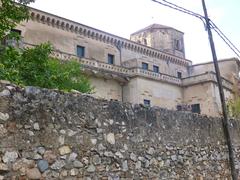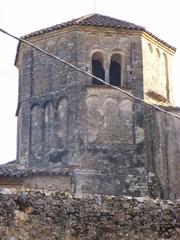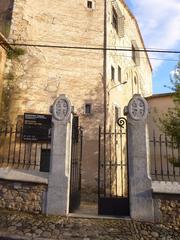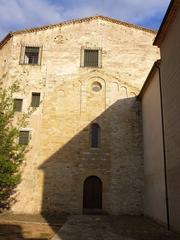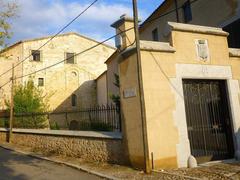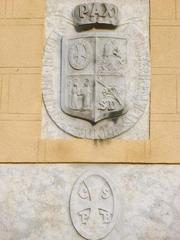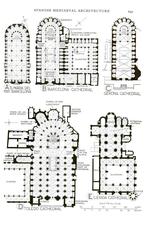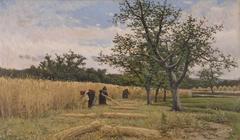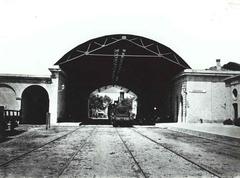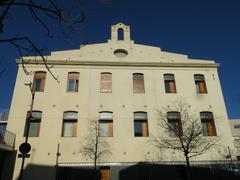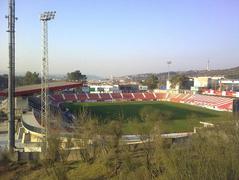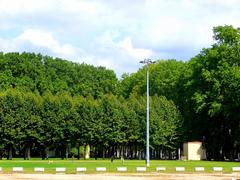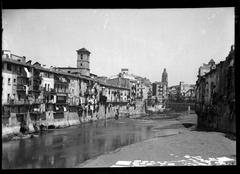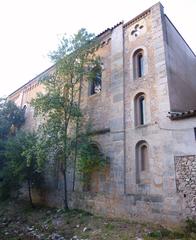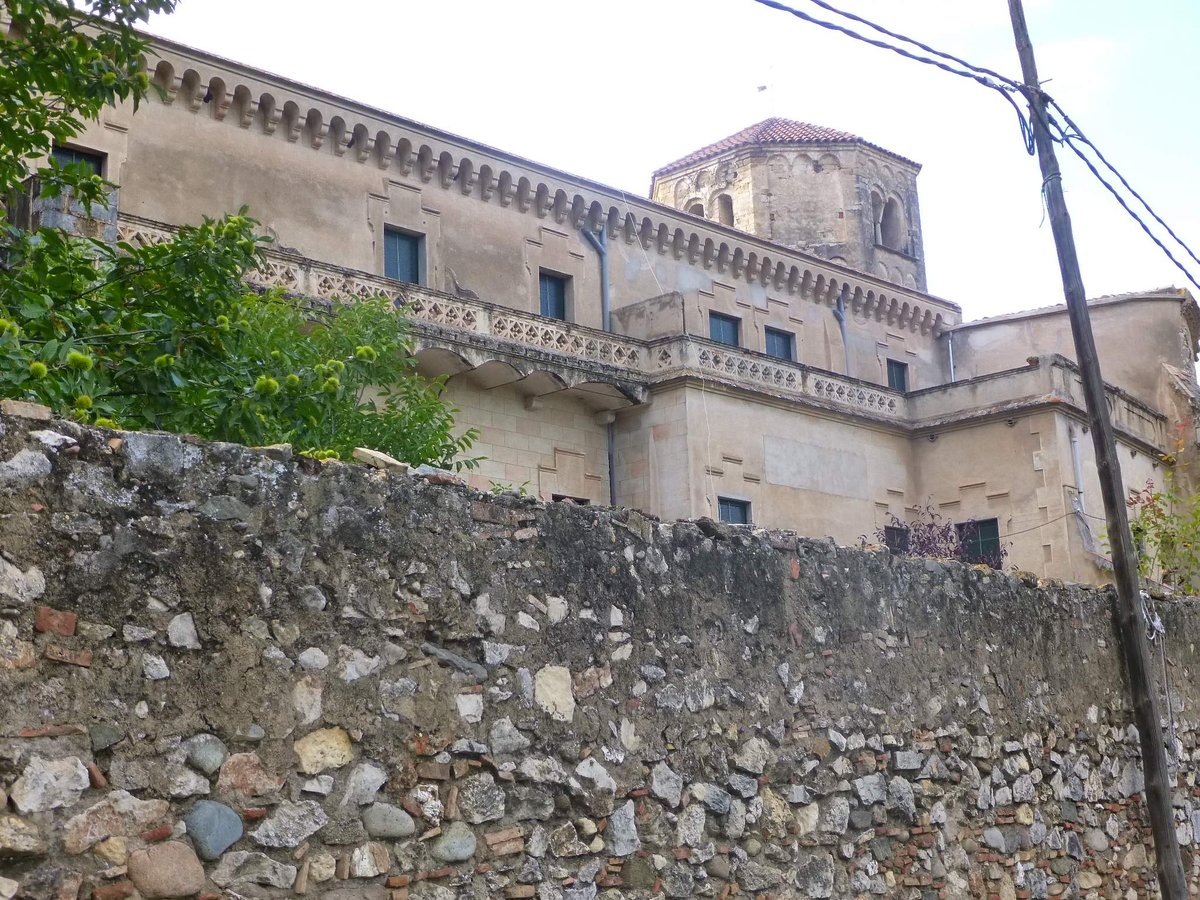
Monastery of Sant Daniel Girona: Visiting Hours, Tickets, and Complete Travel Guide
Date: 15/06/2025
Introduction
Set amidst the tranquil Sant Daniel Valley just outside Girona’s historic center, the Monastery of Sant Daniel is a remarkable monument to Catalonia’s religious and cultural heritage. Founded in the early 11th century by Countess Ermesenda of Carcassonne, this Benedictine convent for women is the only female Benedictine community in Catalonia that has continuously inhabited its original site. The monastery is a living testament to centuries of spiritual devotion, artistic achievement, and female empowerment, and remains an active religious and cultural hub today (Sant Daniel Virtual Museum; monasteries.com).
This guide provides comprehensive information on the Monastery of Sant Daniel’s history, architecture, visiting hours, ticketing, accessibility, and travel tips, ensuring you have all the details needed for a rewarding visit to one of Girona’s most treasured sites.
Historical Overview and Foundation
The Monastery of Sant Daniel was established around 1015, during a period of consolidation for Christian power in Catalonia. Countess Ermesenda of Carcassonne founded the convent both to provide a spiritual home for noblewomen and to strengthen Christian and social structures in the region (Sant Daniel Virtual Museum). The site’s selection—on Girona’s outskirts near the Galligants River—allowed for peaceful contemplation while maintaining connections to the city’s power centers (Triangle.cat PDF).
Architectural Evolution
Romanesque Beginnings
The monastery’s original Romanesque church features a single nave with a barrel vault and semicircular apse. Its robust stone construction, semi-circular arches, and harmonious proportions reflect the era’s architectural style. The cloister, a key element of monastic life, began construction in the 12th century, with the lower gallery retaining Romanesque columns and capitals (Sant Daniel Virtual Museum).
Gothic and Later Additions
During the 13th and 14th centuries, the monastery expanded with Gothic elements. The cloister’s upper gallery was added in the 15th century, featuring pointed arches and more delicate construction, while the lower gallery showcases intricate Romanesque capitals. The most celebrated artistic addition is the 14th-century alabaster tomb of Saint Daniel by sculptor Aloi de Montbrai, a masterpiece of Gothic funerary art (Wikipedia).
Renaissance and Modern Restorations
In the Renaissance and Baroque periods, new chapels and decorative furnishings were added. Restoration efforts in the 20th and 21st centuries have preserved the monastery’s unique layers of Romanesque, Gothic, and later styles, ensuring its continued significance as a historical and cultural landmark (Sant Daniel Virtual Museum).
Cultural, Religious, and Artistic Significance
Center for Female Monasticism
Since its foundation, the monastery has served as a Benedictine convent for women. It provided noblewomen with opportunities for spiritual life, education, and a rare degree of autonomy in medieval society. The Benedictine nuns maintain a rhythm of prayer, work, and hospitality, continuing a tradition of resilience and female empowerment (monasteries.com).
Pilgrimage and the Relics of Saint Daniel
The monastery is a pilgrimage site due to its association with Saint Daniel, an Armenian monk and martyr whose relics were reportedly discovered here in the 14th century. The presence of these relics, enshrined in the Gothic tomb, attracts pilgrims and reinforces the monastery’s spiritual importance (rosamarhotels.com).
Artistic Heritage
The monastery houses a rich collection of religious art, including medieval tombstones, liturgical objects, ceramics, and the renowned cloister capitals depicting biblical scenes, animals, and foliage. These artifacts offer insights into the artistic and devotional practices of the monastic community (Sant Daniel Virtual Museum).
Notable Historical Events
- Medieval Expansion: The monastery’s growth paralleled Girona’s urban and religious development in the Middle Ages, fostering consolidation of Christian authority (Triangle.cat PDF).
- Discovery of Relics (1340): The finding of Saint Daniel’s remains transformed the site into a major pilgrimage center.
- Modern Recognition: Declared a national monument in 1931, the monastery is protected and continually restored (Sant Daniel Virtual Museum).
Visiting Hours and Tickets
- Standard Hours:
Tuesday to Sunday: 10:00 AM – 6:00 PM
(Closed Mondays and public holidays. Free access to the cloister Thursday mornings 10:00–12:00.) - Ticket Prices:
Adults: €6
Seniors (65+), Students: €4
Children under 12: Free - Booking:
Tickets can be purchased on-site or online via the official website. Advance booking is recommended in peak seasons.
Accessibility and Visitor Services
- Accessibility: Key areas (church, cloister) are wheelchair accessible, with ramps and adapted restrooms. Some historic sections may have limited access.
- Guided Tours: Available in several languages and highly recommended for in-depth exploration. Combined tours with other Girona sites are sometimes offered (Sant Daniel Visits).
- Facilities: Restrooms are available, but there is no café or gift shop on site. Eateries and shops are located nearby in the Sant Daniel neighborhood.
- Getting There:
The monastery is a 20–25-minute walk from Girona’s city center via scenic paths. Local buses and parking are also available.
Nearby Attractions
Enhance your visit with these nearby sites:
- Girona Cathedral: Renowned for its Gothic nave.
- Monastery of Sant Pere de Galligants: A Romanesque masterpiece.
- Old Town (Barri Vell): Explore medieval streets and Catalan cuisine.
Visuals, Media, and Virtual Tours
High-quality images of the cloister, church, and gardens, with alt tags like “Monastery of Sant Daniel visiting hours,” can be found on the official website. Interactive maps and virtual tours are available for pre-visit planning, and enhance accessibility for remote visitors.
Frequently Asked Questions (FAQ)
Q: What are the current Monastery of Sant Daniel visiting hours?
A: Tuesday to Sunday, 10:00 AM–6:00 PM. Closed Mondays and public holidays.
Q: How do I buy Monastery of Sant Daniel tickets?
A: Purchase online via the official website or at the entrance.
Q: Are guided tours available?
A: Yes, in multiple languages. Booking in advance is recommended.
Q: Is the monastery accessible for people with reduced mobility?
A: Main areas are accessible; contact the site for specific needs.
Q: Are there special events or feast days?
A: The feast of Saint Daniel on October 10th is a major annual event.
Travel Tips for Visitors
- Visit early or late in the day for a quieter experience and beautiful lighting.
- Wear comfortable shoes for cobblestone paths and gentle slopes.
- Dress modestly and respect areas of silence.
- Book tickets and tours in advance, especially during holidays or peak seasons.
- Explore nearby Girona historical sites for a complete cultural itinerary.
Conclusion
The Monastery of Sant Daniel is both a spiritual sanctuary and a cultural marvel, offering visitors a rare glimpse into nearly a thousand years of Catalan history, art, and female Benedictine life. Its blend of architectural styles, artistic treasures, and ongoing religious tradition make it an essential Girona destination. For updated information on visiting hours, ticketing, and events, always consult the official monastery website and authorized tourism portals.
Enhance your visit with the Audiala app for guided tours and interactive maps, and follow us on social media for news and insights on Girona’s historic sites.
Sources and Further Reading
- Sant Daniel Virtual Museum
- Monasteries.com - Monastery of Sant Daniel
- Wikipedia - Monastery of Sant Daniel, Girona
- Safarway - Sant Daniel Monastery
- Costa Brava Living - Girona Valley of Sant Daniel
- Rosamar Hotels - Monasteries to Visit in Girona
- Triangle.cat PDF
